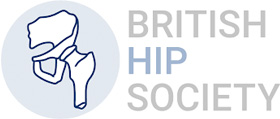Osteotomy
(Realignment Of The Knee)
Osteotomy can relieve pain and delay the progression of arthritis in the knee. It can allow a younger patient to lead a more active lifestyle for many years. Even though many patients will ultimately require a total knee replacement, an osteotomy can be an effective way to buy time until a replacement is required.
Osteotomy literally means “cutting of the bone.” In a knee osteotomy, either the tibia (shinbone) or femur (thighbone) is cut and then repositioned to relieve pressure on the knee joint.
Knee osteotomy is commonly used to realign your knee if you have arthritis damage on only one side of your knee. The aim is to shift your body weight off the damaged area to the other side of your knee, where the cartilage is still healthy. After removing a wedge of your shinbone from underneath the healthy side of your knee, the shinbone and thighbone can bend away from the damaged cartilage.
Knee osteotomy is most commonly performed on people who may be considered too young for a total knee replacement. Total knee replacements wear out much more quickly in people younger than 55 than in people older than 70. Because prosthetic knees may wear out over time, an osteotomy procedure can enable younger, active osteoarthritis patients to continue using the healthy portion of their knee. The procedure can delay the need for a total knee replacement for up to ten years or more.
Advantages and Disadvantages
Knee osteotomy has three goals:
- To transfer weight from the arthritic part of the knee to a healthier area
- To correct poor knee alignment
- To prolong the life span of the knee joint
By preserving your own knee anatomy, a successful osteotomy may delay the need for a joint replacement for several years. Another advantage is that there are no restrictions on physical activities after an osteotomy – you will be able to comfortably participate in your favorite activities, even high impact exercise.
Osteotomy does have disadvantages. For example, pain relief is not as predictable after osteotomy compared with a partial or total knee replacement. Because you cannot put your weight on your leg after osteotomy, it takes longer to recover from an osteotomy procedure than a partial knee replacement.
In some cases, having had an osteotomy can make later knee replacement surgery more challenging.
The recovery is typically more difficult than a partial knee replacement because of pain and not being able to put weight on the leg.
Because results from total knee replacement and partial knee replacement have been so successful, knee osteotomy has become less common. Nevertheless, it remains an option for some patients.
If you’re struggling with knee pain, being active, and have maybe undergone a keyhole knee surgery before, please book in to see me for consultation.






